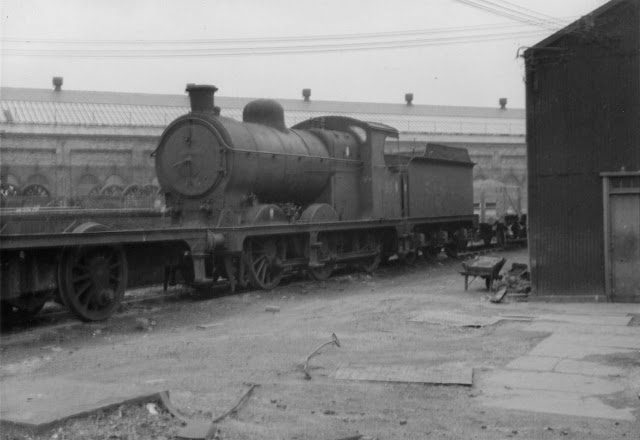A Worsdell P3 Class design for the North Eastern Railway,
the LNER J27 0-6-0 freight locos’ numbers were added to by Raven in 1921, which
included modifications. 115 were built altogether at Darlington and elsewhere,
and they were classified as 5F under BR. The last class members were withdrawn
in September 1967 and No. 65894 is preserved on the North York Moors line.
John Dyer photographed his lone example, No. 65887, at York on 26/7/60. Brian Leay and I were lucky enough to catch up with a few of them on our visit to the Newcastle area sheds in 1966, though we only saw one in steam. No. 65855 was chuffing around outside South Blyth sheds on 26/2/66 and on the same day Nos. 65835, 65832, 65853, 65817 and 65788 were having a turntable party in Sunderland round house. We had taken the ferry between North and South Blyth as foot passengers. The ferry closed down in 1997 after 130 years of continuous operation.













































